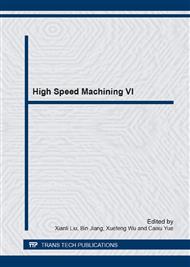p.353
p.358
p.363
p.368
p.374
p.380
p.385
p.390
p.394
Simulation of Machining of Incoloy 907 Based on Thermodynamics
Abstract:
Aero-engine alloys (also as known as superalloys) are known as difficult-to-machine materials, especially at higher cutting speeds, due to their several inherent properties such as low thermal conductivity and their high reactivity with cutting tool materials. In this paper a finite element analysis (FEA) of machining for Incoloy907 is presented. In particular, the thermodynamical constitutitve equation (T-C-E) in FEA is applied for both workpiece material and tool material. Cutting temperature and cutting force are predicted. The comparison between the predicted and experimental cutting temperature and cutting force are presented and discussed. The results indicated that a good prediction accuracy of both principal cutting temperature and cutting force can be achieved by the method of FEA with thermodynamical constitutitve equation. Keywords: Incoloy907,Simulation, Thermodynamical constitutitve equation
Info:
Periodical:
Pages:
374-379
Citation:
Online since:
July 2014
Authors:
Price:
Сopyright:
© 2014 Trans Tech Publications Ltd. All Rights Reserved
Share:
Citation:


